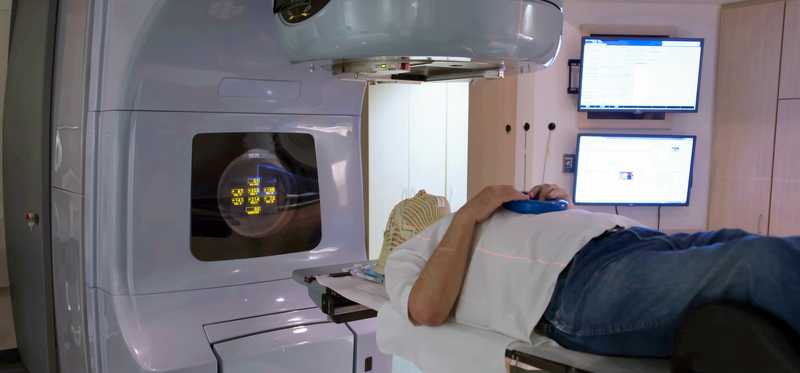The Only 19 Debt-Free Companies in the S&P 500

The Only 19 Debt-Free Companies in the S&P 500
Put your money in companies that know how to manage their finances
If times get tough or an opportunity presents itself, the last thing you want to worry about is a lender knocking on your door demanding payment. That’s true for big companies, too. Weathering economic storms or responding quickly to opportunities can be a struggle for heavily-indebted companies, making them less attractive stocks to buy. Instead, it could be best to invest in companies that manage their finances as conservatively as you do. Here are 19 debt-free S&P 500 stocks you can consider buying.
ALSO READ: 5 Habits That Will Prevent You From Becoming -- and Staying -- Debt Free
Previous
Next

No. 1: Abiomed (NASDAQ: ABMD)
Founded in 1981, this Massachusetts medical device company markets temporary heart pumps used in patients who have suffered a heart attack or are undergoing heart surgery. Demand for the company’s pumps has steadily increased since they were first approved in 2015 and new indications for their use has helped Abiomed’s sales grow markedly. For instance, Abiomed’s revenue increased 33% to $594 million in fiscal 2018 and as a result, its net income more than doubled to $112 million, or $2.54 per share. The company’s growth has allowed it to avoid long-term debt and with international sales only beginning to ramp up, and projects that could expand sales underway, Abiomed shouldn’t have to turn to lenders anytime soon.
Previous
Next

No. 2: Align Technology Inc. (NASDAQ: ALGN)
Align Technology is the company behind Invisalign, a widely-used, clear solution for correcting misaligned teeth. It also markets the iTero Scanner, a hand-held system used by dental providers to take 3D images of a patient’s mouth. Last year, Invisalign revenue grew 29% and iTero sales grew 68% and as a result, Align Technology’s total sales increased over 30% to $2 billion. Out of the 8 million people eligible for treatment every year, Invisalign only has 14% market share, suggesting it still has plenty of opportunity ahead of it.
Previous
Next

No. 3: Ansys Inc. (NASDAQ: ANSS)
Ansys' Workbench software platform is used by engineers in various industries to do simulations. For instance, aerospace engineers and semiconductor companies use Ansys solutions for product design and optimization. The company spends over 18% of its revenue on R&D to stay ahead of its competitors, yet it remains highly profitable and of course, debt-free. Last year, its operating profit margin was 47.4%, up from 36.8% in 2017, allowing it to report net income of $5.30 per share, up 32% year over year. Management’s guiding for sales of $1.41 billion to $1.47 billion in 2019, up from $1.3 billion in 2018, so it appears this company’s rosy performance will continue awhile longer.
Previous
Next

No. 4: Expeditors International (NASDAQ: EXPD)
If you work for a company that’s trying to get something from point A to point B, then you could very well be a customer of Expeditors International, a shipping and logistics company. Expeditors Int’l specializes in shipping long-distances and companies rely on it to handle the complex paperwork necessary, while also minimizing costs. A strong economy means business has been good for the company. Its revenue increased 18% year over year to $8.1 billion and its net income increased 26% to $618 million in 2018.
ALSO READ: Amazon Is Looking More and More Like a Shipping Company
Previous
Next

No. 5: F5 Networks (NASDAQ: FFIV)
Companies are generating mountains of data and F5 Networks solutions help that data travel securely and more efficiently across networks. As more companies turn to cloud and hybrid cloud and enterprise solutions, the market has gotten more competitive, yet F5 still notched single digit revenue growth last fiscal year. Its revenue was $2.16 billion, up 3.3% year over year, and its earnings per share clocked in at $9.87 per diluted share, up from $8.38 previously.
Previous
Next

No. 6: Garmin (NASDAQ: GRMN)
Best known for fitness products, Garmin markets navigation and information software and equipment for use in automobiles, boats, and planes too. Pilots use its solutions to avoid bad weather, fishermen use them to find more fish, and drivers use them to power their auto’s infotainment system. Last year, Garmin’s total sales were $3.3 billion, up 7% from 2017, and its adjusted EPS was $3.69, up 22%. In 2019, management’s thinks sales will reach $3.5 billion and EPS will be $3.70. That should be plenty enough for this company to support its 2.6% dividend yield and remain debt-free.
Previous
Next

No. 7: Monster Beverage (NASDAQ: MNST)
Monster Beverage helped spark the energy drink craze and new flavors have been key to sales growth that’s allowed it to avoid tapping lenders for money. The company’s carved out a niche with action-oriented consumers by sponsoring extreme sports stars and as a result, net sales grew 13% to $3.81 billion and net income increased 21% to $993.0 million in 2018. The company bought back $537 million in stock in the fourth quarter and in February, the company announced a new $500 million share buyback program, so management doesn’t appear worried about having enough financial firepower to continue its growth plans.
Previous
Next

No. 8: Intuitive Surgical (NASDAQ: ISRG)
Robotic surgery sounds like science fiction, but surgeons are already using robotic systems to assist them in many procedures, including gynecology, urology, and hernia surgeries. With over 5,000 of its robotic systems installed worldwide, Intuitive Surgical is the biggest player in this burgeoning market. Last year, its systems assisted in 1 million procedures, resulting in revenue of $3.85 billion and net income was $1.1 billion. Since Intuitive Surgical sells consumables used in each operation, an increasingly larger installed base should reward investors with future top- and bottom-line growth. It was debt-free with $4.8 billion in cash and equivalents on the books entering this year, so the company announced in February its rewarding investors with a new $2 billion share buyback program.
Previous
Next

No. 9: Jack Henry & Associates (NASDAQ: JKHY)
Jack Henry provides back-office solutions, such as transaction processing, to financial services companies including commercial banks, community banks, and credit unions. Its revenue has grown from $1.2 billion in fiscal 2014 to $1.5 billion in fiscal 2018 and in fiscal 2018, its earnings per share improved 6% year over year to $4.85, after excluding one-time tax benefits. As long as people continue relying on banks, Jack Henry’s business should profit.
Previous
Next

No. 10: Rollins (NYSE: ROL)
Rollins is a $14 billion company providing pest control services through a variety of brands, including Orkin. The company racked up $1.8 billion in sales last year and although its dividend payout is small, it’s increased its dividend payment by over 12% annually for 17 consecutive years. Rollins sales grew 8.8% year over year last year, resulting in full year net income of $232 million, so its track record of dividend increases doesn’t appear at risk.
Previous
Next

No. 11: Skyworks (NASDAQ: SWKS)
Skyworks makes chips that allow smartphones and other devices to connect to the internet. It’s biggest customer -- Apple -- accounts for half its sales, but Samsung and Huawei are major customers too. In addition to connecting smartphones and tablets to the world wide web, Skyworks also generates an increasingly larger share of its revenue from the “Internet of Things.” As more machines at work and home are built with smart features, Skyworks sales should benefit. An even bigger driver of future growth, however, could be the deployment of 5G networks. Because 5G is so much faster than 4G, it may spawn significant demand for new devices packed with Skyworks chips.
Previous
Next

No. 12: T Rowe Price (NASDAQ: TROW)
The stock market’s post-Recession ascent since 2009 has been a boon for equity investors and the companies managing their assets, including T. Rowe Price. T. Rowe Price, which was founded by its namesake in 1937, manages nearly $1 trillion across various products, including mutual funds, target-date funds, and other actively managed accounts. Because its investment products are included in retirement plans and annuities, its assets under management has increased as unemployment has fallen, incomes have increased, and asset values have hit new highs. In 2018, its revenue was $5.4 billion and its net income was $1.8 billion, up from $4 billion and $1.2 billion in 2014.
Previous
Next

No. 13: Take-Two Interactive (NASDAQ: TTWO)
Online gaming is incredibly popular and including in-game purchases in its most popular video games is paying off nicely for Take-Two Interactive, one of the biggest gaming software companies. Its wholly-owned subsidiaries are Rockstar Games (perhaps, best known for Grand Theft Auto and Red Dead) and 2K, which boasts various titles including NBA 2K. Since gamers are spending more time playing online, microtransaction revenue is increasing, and because titles are available via high-margin digital downloads, the company’s profitability is improving. In fiscal 2018, digital accounted for 63% of its $1.8 billion in revenue and earnings per share totaled $1.57, up from $0.73 in fiscal 2017. In fiscal 2019, revenue and profit should increase following last October’s release of Red Dead Redemption 2, 2018’s top-selling video game.
Previous
Next

No. 14: Textron Inc. (NYSE: TXT)
It’s been steady-going for Textron, one of the largest U.S. defense contractors. Growing demand for jets and turboprops is increasing revenue in its aviation business, where the company has a backlog worth $2 billion, and as a result it reported $13.9 billion in revenue last year, which is about in line with the $13.8 billion reported in 2014. Although revenue hasn’t made tremendous headway, operational improvements have significantly increased net income from $600 million to $1.2 billion since 2014. Combined with share repurchases, that’s enabled Textron to increase its EPS to $4.88 in 2018 from $2.15 over that period. Defense spending isn’t likely to change dramatically, but as long as it increases steadily, Textron’s improved profitability should still allow it to be a profit-friendly stock to own.
Previous
Next

No. 15: Varian Medical Systems (NYSE: VAR)
An increasingly larger and older population is causing the number of people with cancer to increase. Fortunately, Varian Medical’s innovating solutions that can improve outcomes for them, including radiotherapy and proton therapy. In fiscal 2018, it reported $2.9 billion in revenue, up from $2.6 billion in 2017, and after adjusting for one-time tax impacts, it earned $409 million, up 35% year over year. The company’s net cash from operations grew 14% to $455 million last fiscal year, suggesting it doesn’t need to take on debt to reward investors with growth.
Previous
Next

No. 16: Chipotle Mexican Grill (NYSE: CMG)
This Mexican-food dynamo’s food safety setbacks appear to be firmly in the rearview mirror because same stores sales, revenue, and profit have improved significantly in the past year. Chipotle operates roughly 2,500 restaurants worldwide and in 2018, those stores produced sales of $4.86 billion. That’s the highest level since the company reported $4.5 billion in sales in 2015 before food-borne illnesses derailed performance in 2016. Admittedly, Chipotle’s profit hasn’t rebounded to 2015’s levels yet, but profit did jump to $176 million in 2018 from $23 million in troublesome 2016 so it may only be a matter of time.
Previous
Next

No. 17: Ulta Beauty (NASDAQ: ULTA)
Ulta Beauty doesn’t sport any debt on its balance sheet and despite investing in new locations (it has 1,174 stores nationwide), it still has nearly $300 million in cash and equivalents at its disposal. In fiscal 2018, sales were $6.7 billion, up from $5.9 billion in fiscal 2017. Revenue has more than doubled and net income has increased to $658 million from $257 million since fiscal 2015. Sales growth at current locations plus plans to open about 80 new stores has management guiding for total sales to increase at a low double-digit pace in fiscal 2019. The company’s bottom line should also benefit from e-commerce sales accounting for an increasingly larger share of sales. This year, management expects internet sales will grow by at least 20%.
Previous
Next

No. 18: Fortinet (NASDAQ: FTNT)
Internet security is big business and increasingly complex threats are boosting results at Fortinet, a leader in protecting corporations from cyber threats. Fortinet’s solutions, including firewalls and technology that secures various devices, including laptops, produced a combined $1.8 billion in revenue in 2018, up 20% from 2017. Its free cash flow jumped 28% last year, its operating margin improved to 22% from 17%, and its net income surged to $332 million from $31 million in the period. In 2019, management is guiding for between $2.06 billion to $2.10 billion in sales, making Fortinet an intriguing stock to buy.
Previous
Next

No. 19: TripAdvisor (NASDAQ: TRIP)
When it comes to planning a much-needed vacation, no one wants to make a mistake; so millions of travelers turn to TripAdvisor to understand their options. TripAdvisor’s travel websites provide 730 million reviews and opinions on over 8 million places and that gives it an edge when it comes to attracting visitors to its platform. In 2018, helping visitors book their travel translated into sales of $1.62 billion and net income of $113 million. That’s pretty good, but the travel industry is fiercely competitive and that means TripAdvisor needs to plow a lot of money into marketing so that visitors return. Increased spending has contributed to its earnings declining over the past three years, despite its revenue growth, so investors will want to keep an eye on its earnings from here.
Todd Campbell owns shares of Align Technology, Apple, and Intuitive Surgical. The Motley Fool owns shares of and recommends Abiomed, Align Technology, Apple, Chipotle Mexican Grill, Intuitive Surgical, Monster Beverage, Rollins, Skyworks Solutions, Take-Two Interactive, and TripAdvisor. The Motley Fool has the following options: long January 2020 $150 calls on Apple and short January 2020 $155 calls on Apple. The Motley Fool recommends Fortinet, Textron, and Ulta Beauty. The Motley Fool has a disclosure policy.
Previous
Next
Invest Smarter with The Motley Fool
Join Over Half a Million Premium Members Receiving…
- New Stock Picks Each Month
- Detailed Analysis of Companies
- Model Portfolios
- Live Streaming During Market Hours
- And Much More
READ MORE
HOW THE MOTLEY FOOL CAN HELP YOU
-
Premium Investing Guidance
Market beating stocks from our award-winning service
-
The Daily Upside Newsletter
Investment news and high-quality insights delivered straight to your inbox
-
Get Started Investing
You can do it. Successful investing in just a few steps
-
Win at Retirement
Secrets and strategies for the post-work life you want.
-
Find a Broker
Find the right brokerage account for you.
-
Listen to our Podcasts
Hear our experts take on stocks, the market, and how to invest.
Premium Investing Services
Invest better with The Motley Fool. Get stock recommendations, portfolio guidance, and more from The Motley Fool's premium services.